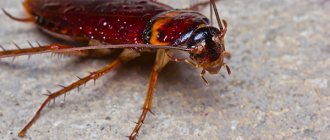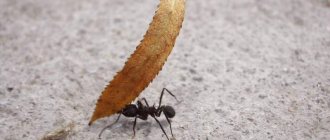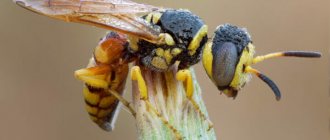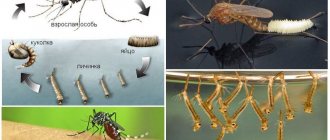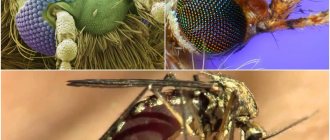Cockroaches have a reputation as tenacious and hardy household pests. It is known that these creatures are resistant to radiation and are also able to adapt to the effects of pesticides, which creates difficulties in the fight against cockroaches in apartments. In this regard, it is interesting how other factors influence how long domestic cockroaches live in residential areas. For example, how long does a cockroach live without water and food, can cockroaches live without air, and how the temperature of the environment affects the development of a cockroach.
How many years do cockroaches live?
If we turn to paleontological evidence, it is revealed that the history of cockroaches as an order of the insect class goes back hundreds of millions of years, going back to the Carboniferous period of the Paleozoic era. Let us note here the remarkable fact that the existence of humanity is negligibly short in comparison with how long cockroaches live. But these are ancient matters, and we are more interested in modern cockroaches living in apartments, or more precisely, how long a cockroach lives at home.
What are these big red cockroaches found near shops, and sometimes right in houses?
These are American cockroaches. They are really big, they are much larger than the red ones, but they also have a red coloration. They are often called giant, or huge red cockroaches. Their body length is 3-4 centimeters and now they are locally found in all major cities of Ukraine, throughout Europe, except the north of Scandinavia, in the center of Moscow and in many other Russian cities.
It is believed that they are now actively expanding their range and their numbers in Europe are growing rapidly. They can be found in the house, near the house, but such meetings are rare. At least for now.
How long does a domestic cockroach live?
The life cycle and how quickly cockroaches grow after hatching depends, firstly, on the species of cockroaches, and secondly, on the external conditions where they live. The life of all cockroaches begins with the laying of eggs hidden in a capsule called an ooteca, then cockroaches pass through a series of larval stages and eventually develop into adult insects. Of the more than 4,000 species of cockroaches found in homes, the majority are red, black, and American.
How long does the Prusak cockroach live?
The female red cockroach sheds a capsule, or ootheca, containing 30-40 eggs 1-2 days before the newborn nymphs emerge. Depending on environmental conditions, the period of development from egg to adult in red cockroaches varies between 50-200 days, the average period is 100 days. The lifespan of adult Prussians is 100-200 days.
How long does a black cockroach live?
Male black cockroaches live on average 110-160 days, while females have a life expectancy of up to 180 days. During this time, they manage to lay 8-12 oothecae, 15-16 eggs in each. The period of development from egg to adult in black cockroaches includes 7-10 intermediate larval stages and depends on the ambient temperature.
When eggs appear in the summer months in warm climate zones, the development time takes up to 200 days, but in conditions of prolonged cold weather they can reach 800 days. The average development period is 500-600 days, so the total lifespan of black cockroaches is about two years.
How long does an American cockroach live?
The American cockroach is the largest (up to 50 mm in length) and long-lived representative of synanthropic cockroaches. The incubation period of eggs lasts 40-45 days, and the complete period of development to adulthood, which includes 10-13 larval stages, is 600 days. Adult males live up to 360 days, and females up to 700 days, so long-lived American cockroaches can live more than three years.
Genetic possibilities
Suitable conditions for the existence of pests are created in an apartment or a person’s house. For normal life activities, the presence of secluded places, a temperature of at least 22 degrees Celsius, and an abundance of food and food are required. Under such conditions, the lifespan of a cockroach is determined by its genetic abilities.
- Blattella germanica. Common household pest. In our area they are called red cockroaches, Prussians. The embryonic period lasts from 30 to 50 days, the transformation of nymphs into a sexually mature individual occurs in 75-130 days. The lifespan of adults is a maximum of 16 months.
- Blatta orientalis. Black cockroaches are larger than cockroaches, but inferior in fertility and ability to adapt to the environment. Nymphs reach sexual activity after 5 months at a temperature of +27 degrees Celsius. Under unfavorable conditions, development extends to 5 years. The life expectancy of a cockroach after transition to the adult stage is 2 years.
- Supella longipalpa. The furniture pest looks like a red Prussian. The embryonic stage at room temperature lasts 3 months. It takes 5 months for the larvae to mature. Sexually mature domestic cockroaches live no more than 4 months.
Real centenarians live in Australia. They are called burrowing cockroaches or rhinoceroses. Adults can live up to 10 years. Weight reaches 35 g.
At what temperature do cockroaches live?
Cockroaches are heat-loving creatures, and for this reason they love living in people's homes. Temperatures between 20-30 degrees Celsius are optimal for the reproduction and development of the cockroach population. As the temperature drops, the biological processes in the body of these insects gradually slow down. When the thermometer drops below zero, cockroaches die within 4-8 hours. An increase in temperature to +50 degrees and above leads to dehydration of cockroaches, as a result of which they also die.
Black cockroaches are more adapted to low temperatures than red ones, and therefore in warm latitudes they live not only indoors, but also outdoors. However, if the air temperature drops below +15 degrees, black cockroaches stop reproducing.
Where do Prussians come from in human housing?
In a particular person’s home, in your apartment or in a house, cockroaches appear, independently moving from neighboring premises. They seize apartments faster, houses more slowly, because they prefer not to leave the premises on the street even in the summer, in hot weather, because here they have a lot of enemies. On the street, cockroaches, due to their harmlessness and defenselessness, are eaten by everyone - birds, shrews, wasps, flycatchers - all animals that feed on insects and are nocturnal.
However, there are known facts when cockroaches settled in the summer outside human buildings in fields, for example, in landfills. And in the private sector, they may well move from one house to another in the summer.
That is, in most cases, cockroaches enter the premises on their own. Unless, of course, people, in their generosity, leave holes and cracks for them to crawl through.
Cockroaches are often delivered with food to food industry enterprises, catering establishments, and stores. Somewhere in warehouses, the Prussians breed, they are found in boxes, among packages, among finished products, they are easily reloaded from box to box, loaded into cars and brought to a store or restaurant. This is the second way of their spread, much less frequent, but much larger in scale. That is, if somewhere within one apartment building hundreds of cockroaches crawl from apartment to apartment every day, then only a few or at most dozens of cockroaches leave some warehouse in a box with groceries. But these cockroaches, on the other hand, will move from one city to another, which other individuals cannot do on their own.
From here we draw a very important conclusion: if you have any cracks in your apartment through which cockroaches can get in, they will most likely get in to you. Even if you properly poison them and destroy them all, they will come back later.
The second conclusion: in any establishments and in any enterprise that supplies food, cockroaches constantly reappear and measures to combat them must be carried out regularly with varying frequency, even if ideal cleanliness is maintained here. It’s like with bedbugs - any hotel needs to be disinfested, because guests unintentionally constantly bring these insects in bags from other rooms.
By the way, we are often asked a similar question:
How long do cockroaches live without food, water and air?
Cockroaches are cold-blooded organisms; they do not waste energy to maintain the required body temperature, which allows them to endure hunger for a relatively long time. Depending on the species, cockroaches can survive without food from seven days to one month.
But without water, these insects will last no more than a week, so cockroaches prefer those rooms in the apartment where water sources are available. And if you make sure that in the kitchen and bathroom there are no drops of water left in sinks, under the refrigerator, in the shower stall, on pipes, faucets and other places, this will help reduce the cockroach population.
Scientific research confirms that cockroaches are able to hold their breath and, if necessary, go without air for up to 30-40 minutes, for example, when under water. Scientists are studying whether cockroaches use this ability to prevent moisture loss in the body. The fact is that the tubes called spiracles, which are used when cockroaches breathe, are also used to transport water. If these channels are closed, cockroaches retain moisture inside their bodies.
Where do red cockroaches come from or where did they come from?
This question can be interpreted in two ways - where they appear in a particular apartment, and how they appeared in our country in general. After all, they are not able to survive here in the wild, and therefore, somehow they got here when comfortable residential and industrial premises had already appeared here.
Let's start with the second one, because it is more global. It is impossible to answer this specifically, because scientists cannot say for sure from which specific country, or group of countries, the native red cockroaches began expanding into adjacent states, and with vehicles began to move around the world.
It is most likely that the homeland of red cockroaches is Indochina, the territories of modern Thailand, Burma and China. There are hypotheses that this species may originate from Ethiopia or North Africa, from Central Asia. And there is even a version about his European aboriginality, that is, that even before the advent of people he lived in Italy and Greece, but the version of his South Asian origin has the most evidence and the least refutation.
Somewhere in India these guys are crawling around in the leaves in the forest and not bothering anyone
It was from Asia that it spread almost throughout the world with traders on ships or in goods in caravans. Just as today tropical cockroaches often come from the Caribbean in boxes with bananas to Europe.
Can a cockroach live without a head?
This sounds like science fiction, but it is a true fact, confirmed experimentally. The body of the cockroach actually continues to live after decapitation, and even the head, separate from the body, moves its antennae for several hours.
Scientific American provided a detailed explanation of this phenomenon by biochemist Joseph Kunkel of the University of Massachusetts, who studies the development of cockroaches. The scientist explained the differences in the structure of the respiratory, circulatory and nervous systems of insects from vertebrates.
It turns out that cockroaches don't use their heads to breathe; they breathe through spiracles, or tiny holes located on each body segment. In this case, oxygen enters the tissues directly through the trachea, and not through the blood, and even the brain does not participate in this process. The circulatory system of cockroaches is not closed, and cutting off the head does not lead to a critical drop in blood pressure and uncontrolled bleeding.
Within each segment of the insect body, clusters of ganglion-nervous tissue agglomerations are evenly distributed, which perform the nervous functions responsible for reflexes. Therefore, in the absence of a brain, the body continues to function at the level of elementary reactions - it can stand, respond to touch and move. Experimental research on this topic was conducted by entomologist Christopher Tipping at Delaware Valley College in Doylestown, Pennsylvania.
In laboratory conditions, in which the researchers sealed the wound with dental wax to protect the body from dehydration and infection, the cockroaches survived headless for several weeks. In real conditions, of course, the survival time is much shorter. Some sources claim that a cockroach lives without a head for 9 days, others give longer or shorter periods. One way or another, the insect eventually dies from bacterial infections or from dehydration, since cockroaches without a head cannot drink.
Why are red cockroaches dangerous?
Red cockroaches are dangerous because they leave a large amount of their chitinous coverings in the room. These coverings contain a large number of allergens and can provoke chronic runny nose in people living in the same room with cockroaches. Moreover, in most cases, people do not even understand the reasons for this runny nose, they endlessly search for remedies for it, but the reasons, in fact, run around the table at night, hide behind the refrigerator during the day, and then shed or die and leave behind a new portion of allergens.
Moreover, red cockroaches are more dangerous than black ones, since they are more numerous and each individual leaves 7-8 such chitinous shells during its life. That is, red cockroaches leave more allergens in the room than black ones. And therefore it is they who need to be destroyed first.
It is also believed that red cockroaches actively bring dirt and infections into apartments from garbage disposals and other dirt accumulations in the house. But it is impossible to measure this danger and most likely it is exaggerated to one degree or another. Cockroaches do not run directly from the garbage chute into your bread bin, and those individuals that run on tables and bedside tables sit almost right there during the day, at tables and bedside tables.
Red cockroaches, in fact, are not as long-range as they seem. At first glance, it seems that they run very fast and can actually get from the front door to your table in a matter of minutes. But that's not true. You can check for yourself that if you force a cockroach to run a meter in one direction, and then a meter in the other, it runs out of steam and runs much slower.
Plus, in order to get from the garbage chute in the front door to your kitchen and transfer some kind of infection, it needs to overcome a large number of obstacles. That is, cockroaches that actually visit very dirty places and your kitchen in a short period of time are either not present at all, or they are isolated individuals. For the rest, all this dirt falls off their paws or they clean it off themselves before climbing on your food.
A cluster of cockroaches in the kitchen behind the refrigerator - this is where they transfer dirt and dust to food
Consequently, it is currently unjustified to consider cockroaches as epidemiologically significant carriers of dangerous diseases.
Do cockroaches and bedbugs live together?
On the Internet, there are comments from users who say that bed bugs do not live with cockroaches under the same roof, and that they allegedly displace the other. But this statement is not confirmed in practice. Both bedbugs and cockroaches have natural insect enemies, such as flycatchers or predatory wasps, but these species do not pose a danger to each other.
Bedbugs and cockroaches live together without problems, since their food and territorial interests do not overlap. Even with high numbers of both populations, when these species coexist, for example, in the same dorm room, they do not conflict with each other.
What do red cockroaches eat?
Red cockroaches eat almost everything that a person eats, as well as missing, spoiled, dried food, the bodies of dead cockroaches, drops of oil on the walls and floors, mold fungi, excrement (for small larvae this is often the main food), skin that peels off in humans from your feet and crumbling to the floor, in case of severe hunger - wings from each other, cardboard, paper, egg trays.
However, from rooms where people do not live, no new food appears, cockroaches quickly move to neighbors who have more food. And such eating of food is the main harm to the household caused by red cockroaches.
Do cockroaches live where ants live?
Ants are also synanthropic pests, and their paths in the apartment often intersect with the habitat of cockroaches. As for food, these insects have largely the same tastes, and both are equally dependent on water. At the same time, cockroaches and ants in some cases live in a private house or in an apartment - together, and do not fight with each other.
However, this neighborhood cannot be called cloudless and peaceful either. Although cockroaches, like ants, are polyvorous, they do not attack living insects but feed on organic waste, including carrion and feces. Ants, in turn, abhor carrion and sewage, but they hunt insects that get in their way, including cockroaches. So, at times, isolated cockroaches become victims of ants, but there is no talk of severe species competition among these domestic pests.
Dmitry Lipchiu
Please rate the material
General idea of red cockroaches
Some very general information: the red cockroach is the most characteristic representative of its family, even if it is relatively small. It has a body structure typical of all cockroaches, leads a typical lifestyle, and looks like the most average cockroach.
Interesting fact: in Russia, red cockroaches began to actively spread during the era of the Napoleonic wars, and the appearance of these insects here was associated with the appearance of troops from Prussia. That's why red cockroaches were called Prussians. In English they are called the German Roach, that is, the German cockroach, that is, when European scientists gave the species a name, they believed that it appeared and spread from Germany. In Germany, on the contrary, this species was called Russian cockroaches. But none of these origin theories were correct.
We are often asked...
What are red cockroaches afraid of?
This is also a question based on “I’ll find out what they’re afraid of, I’ll put it in the house, they’ll get scared and run away.”
In fact, cockroaches are afraid of temperatures below 0°C, and even from rooms where it is less than +10 they quickly leave. They are afraid of temperatures above 45°. These temperatures can both scare them away and destroy them. If this allows people to stay indoors, of course.
Cockroaches are not afraid of the smells of various herbs. Even if they are afraid, it is impossible to drive them out of the apartment with such herbs. And cockroaches are not afraid of ultrasonic, electromagnetic and magnetic resonance repellers. You can only buy such things if you want to throw money away.
Head: is it needed or not?
No matter how strange and wild it may sound, but yes, a cockroach can live without a head. Just like the head itself without it. Of course, it is difficult to believe in this simply because everyone knows what happens to a person if he is beheaded. But with cockroaches the situation is much different.
American scientists confirmed this. They carefully decapitated the cockroach, sealed the joint between the body and head with wax, and then placed the body and head in a special solution. And what a surprise the scientists were when, in addition to the body, the head also lived! It is quite simple to explain this in human language.
A cockroach's body systems are different from those of humans. For example, their circulatory system is open without capillaries, so if you tear the head away from the body, the vessels will simply become clogged with coagulated blood and continue to function.
In order to breathe, a person still needs a head, because it contains a nose and a mouth. But for a cockroach this is not necessary. His body is dotted with a huge number of tracheas, through which he breathes. The head does not take part in this process.
A cockroach can even live without a head, but not for long
What about the brain?
The digestive system still plays an important role, since the cockroach still absorbs food through the mouth. But even without a head, he can live for ten days if he has had a hearty lunch beforehand. It is much more likely to be killed by mold or other insects than by starvation.
Many may ask: “What about the brain?”, and they will still be mistaken. A cockroach has more than one brain in the usual sense. In every part of his body there are nerve nodes that are responsible for body movements and other sensations. The loss of a head is simply the loss of one of the departments, nothing more. But, despite such skills, the head is still not as durable as the body. Therefore, she will “live” much less.
As you can see, most of the legends were still confirmed, therefore, in order to prevent the appearance of these parasites in your home, you need to carefully monitor the water in the house first of all. Cockroaches will live quite a long time without food and a head, but they cannot survive without water, so they are attracted to damp places.
Factors influencing the life of cockroaches
Life expectancy is influenced by environmental conditions and how cockroaches live: temperature, amount of water and food.
The answer to the question of how long cockroaches live without food may surprise many, because they can easily survive for a long time without food:
- “red” individuals – 40-50 days;
- black – up to 70.
This is explained by the structure of the body. Insects are cold-blooded, so they do not need energy to warm their bodies, and if there is a lack of food, they simply wait for a more favorable moment to feed. Therefore, the period of how many days cockroaches live without food can be so long.
Cockroach and food
Interesting!
The only thing that can kill a cockroach during prolonged fasting is infection by mold or other microorganisms.
Temperature conditions are of great importance for life: optimally +20ºС and above, but they cannot withstand the cold: already at -1 ºС the parasites die, which is often used in the fight against cockroaches, using freezing of the room.
The most common types of cockroaches and their lifespan
In this article I would like to highlight 3 types of cockroaches, which are one of the most common, while only 2 species live within our territorial borders:
- A red-haired cockroach or a Russian cockroach - perhaps most apartment residents are familiar with these nosy reddish or brown scoundrels. Prussians live on the second floor and above, deftly moving through ventilation airlocks, thanks to which they are able to crawl into almost any apartment. The average lifespan of red cockroaches is approximately 10 months, provided that the insect is in a favorable environment and has access to water and food.
- Black or basement cockroach - their main distinguishing feature is their black color, more massive body and the fact that they live only in basements and not above the first floor. The lifespan of black cockroaches is somewhat shorter than their red relatives; on average, they live about 8 months.
- American cockroach - this species is practically not found in our latitudes, but compared to the first two it has significant differences. First of all, American cockroaches are much larger, and on average they live for about 2-3 years.
Stages of life
The fertilized female lays eggs in an ooteca (sac) which she carries with her on her abdomen. Over the course of 2–4 weeks, the ootheca darkens and increases in size. Afterwards, the female drops it in a warm, secluded place and small white cockroaches (nymphs) appear from it, their size is no more than 3 mm. Next, the nymphs darken and grow, going through a period of several molts (about 5). The period of transformation of an imago into an adult can last from 2 months to six months, it all depends on the ambient temperature (optimally +30°C). And the total lifespan of the red barbel is 9 - 12 months, and its black counterpart is up to 2 years.
How do cockroaches survive in unfavorable conditions?
Difficult periods can occur for everyone, including domestic Prussians. In this case, life expectancy becomes an order of magnitude shorter. In extreme conditions they survive, but only for a certain period.
How to get rid of black cockroaches forever read the article here.
A tropical climate or life in southern latitudes allows insects not to be afraid of temperature changes. But in the middle zone they are often forced to endure inconveniences, for example, when the heating is turned off. If the temperature is reduced to -5, the insects die immediately, although this will require risking the entire heating system.
Help: As you know, even radiation does not kill pests. In reality this is not the case. The dose of radiation that an insect can withstand is 15 times greater than that of a human, and yet it is not infinite. If an insect is irradiated for a long time or strongly, it will also die.



